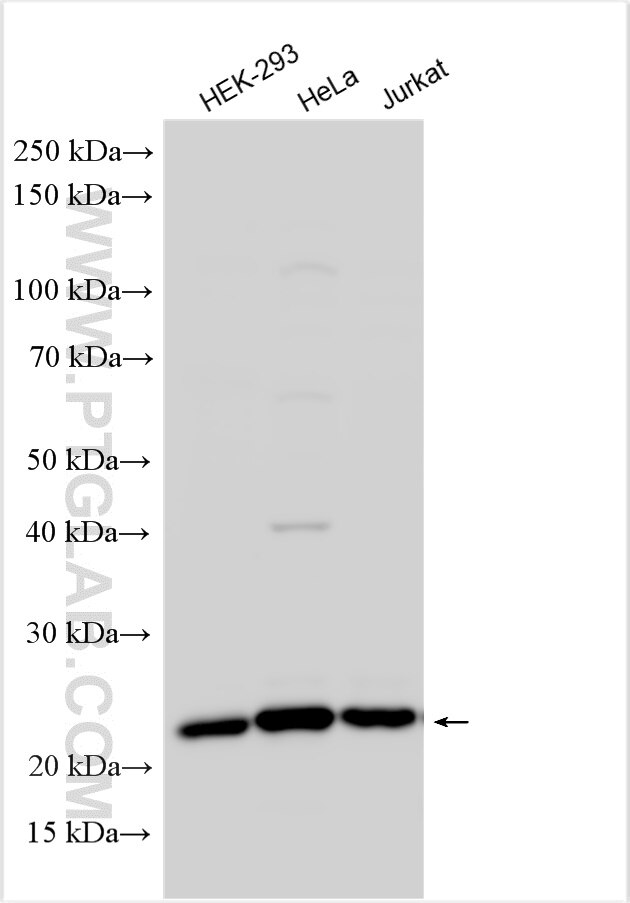Tested Applications
| Positive WB detected in | HEK-293 cells, HeLa cells, Jurkat cells |
Recommended dilution
| Application | Dilution |
|---|---|
| Western Blot (WB) | WB : 1:1000-1:6000 |
| It is recommended that this reagent should be titrated in each testing system to obtain optimal results. | |
| Sample-dependent, Check data in validation data gallery. | |
Product Information
31112-1-AP targets COMMD9 in WB, ELISA applications and shows reactivity with human samples.
| Tested Reactivity | human |
| Host / Isotype | Rabbit / IgG |
| Class | Polyclonal |
| Type | Antibody |
| Immunogen | COMMD9 fusion protein Ag35078 Predict reactive species |
| Full Name | COMM domain containing 9 |
| Observed Molecular Weight | 23 kDa |
| GenBank Accession Number | BC010892 |
| Gene Symbol | COMMD9 |
| Gene ID (NCBI) | 29099 |
| RRID | AB_3669861 |
| Conjugate | Unconjugated |
| Form | Liquid |
| Purification Method | Antigen affinity Purification |
| UNIPROT ID | Q9P000 |
| Storage Buffer | PBS with 0.02% sodium azide and 50% glycerol , pH 7.3 |
| Storage Conditions | Store at -20°C. Stable for one year after shipment. Aliquoting is unnecessary for -20oC storage. 20ul sizes contain 0.1% BSA. |
Background Information
COMMD9, also known as HSPC166, is a member of the COMMD family of proteins. The COMMD protein family is an evolutionarily conserved gene family that plays a role in a number of critical biological processes, including inflammation, copper homeostasis, sodium balance, endosomal sorting and cancer. COMMD9 has been shown to participate in TFDP1/E2F1 activation and to play a critical role in non-small cell lung cancer (PMID: 27871936)
Protocols
| Product Specific Protocols | |
|---|---|
| WB protocol for COMMD9 antibody 31112-1-AP | Download protocol |
| Standard Protocols | |
|---|---|
| Click here to view our Standard Protocols |



